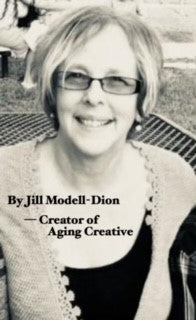
It was 1971, a year that holds two significant memories in the depths of my mind: the thrill of obtaining my driver’s license and the sight of the marquee sign above the Ridgeway Theater in Stamford, Connecticut, announcing the screening of the movie Harold and Maude.
Thus began my enduring admiration for Ruth Gordon, the spirited actress who portrayed Maude, the character I came to revere. Even now, the mere mention of her name serves as a beacon of positivity, a reminder to strive for excellence and transcend mediocrity.
“Vice, Virtue. It’s best not to be too moral. You cheat yourself out of too much life. Aim above morality. If you apply that to life, then you’re bound to live life fully.”
These profound words, spoken by Ruth Gordon’s character Maude, a free spirit who embraced life at nearly eighty, resonated deeply with me. She becomes the muse for the young man she met at a cemetery. Harold, whose nineteen and obsessed with death, falls under her spell.
What was it about this woman and actress that jolted my new perception of self-confidence?
Did I become Harold?
Going to the movies, we could escape our lives and imagine someone bigger and better than ourselves. It seemed Jane Fonda and Faye Dunaway, our matinee idols, could steal your full attention by just entering a room on-screen without as much as a single word.
Several leading ladies back then, along with Jane and Faye, like Patty Duke, and Diana Ross, made a big impression on me as a young girl, but it was the mature Ruth Gordon who captured my heart and inspired me.
While watching her diminutive frame dominate the widescreen and deliver her lines with a punch, an attitude, there was just something captivating about her. I wasn’t quite sure what it was; her presence exuded ——-confidence, strength, and seemed oddly familiar without me understanding it. I was blind to why I admired Ms. Gordon.
By this time, at sixteen years old, I was hanging out with friends and going to parties and the movies. It was only natural that my peers and these new relationships became most important, replacing those once wanted stay-overs at my grandparents. If I only knew then that this time with my grandparents wouldn’t last forever, and when it ended for good, I’d be left with a hole in my heart. I would be forced to rely on broken memories, pictures, and questions for the family.
Early growing up, we lived in the Bronx, only a few miles from my Grandparents’ apartment house. Their red brick building with its stone statues standing guard on Knox Place was magical——- a special place where a young person’s fantasies and imagination have a place to grow.
Their apartment was spacious, one floor up from the street, a corner unit across from Van Courtland Park, and a rent control dream for decades. The living room was adorned with Victorian-style furniture draped in plastic, classic crown molding accenting the high ceilings, a non-working fireplace, a hanging Cuckoo Clock, and those majestic windows without screens overlooking the park while hearing the sounds of traffic along Gun Hill Rd.
A view from their parlor like in George Seurat’s painting, A Sunday Afternoon, would now demand thousands in rent but then, affordable for a family. A pre-World War II city dwelling where occupants like my grandparents stayed until they died.
So many more things on the list to recall.——
A few that stand out: like the passing EL train at night that created the greatest light-show for a child tightly tucked in their bed. The fabulous vanity in my grandmother’s bedroom, whose drawers filled with buttons, gave us hours of enjoyment, sifting through her collection as if they were rare jewels and artifacts. Then there was a dumbwaiter located in the kitchen, allowing items for transporting between the basement and all floors. And lastly was the crowning glory of my Grandma Mary, her enamel, gas, vintage cooking stove, standing over thirty years old and spotless. Boasting to everyone, it wasn’t unusual to find a stranger in the kitchen she brought up from the street showing off her white shining appliance as if it was a prize-winning steer in the middle of her kitchen.
It was there in that kitchen, the hub of the Freeman, home where everything happened. Meals were served promptly at the Naugahyde dinette set. The décor was simple in design, with white walls and appliances. It was there where I spent most of my time with this woman, Mary Feinstein Freeman, who took on the role of my maternal grandmother while never having met my mother’s mother, who died decades before I was born.
It was Grandma Mary.—— Always unapologetic, intensely overconfident, secretive, relentless, but loving with her quirky ways.
She enjoyed playing cards with me but would never intentionally let me win. She carried Lorna Doone cookies and kept an endless supply of butterscotch candies in her purse, giving them out to everyone. She’d always stayed in front of us when out walking like a mother to her ducklings. She’d open other people’s refrigerators, and according to my sister, she could return anything to the store no matter how old or used the item or object was.
Mary Feinstein Freeman was energetic, carefree, compulsive to the dismay of many others, and always absolute! She was not my grandmother by blood, but our relationship began early. It was as solid as any blood-bonded grandparent/grandchild connection formed.——– When I think of her, I know she is the woman who makes the rain come.
I watched the movie Harold and Maude again a few years ago, and this time something clicked in the scene where Maude, who enjoys attending funerals, leaves the gravesite service. In the rain holding her yellow umbrella, Maude leads the exiting procession. Wearing a light-color raincoat contrary to everyone else’s black, she prances by headstones as if they were all old friends. Maude displays her energetic untroubled style.
With a skip, out in front, assured and with a purpose is Ruth, and Ruth is Maude.—— And together, they embody all the things I remember about Grandma Mary.
Just like Maude, Grandma Mary was unapologetic, intensely overconfident, and loving with her quirky ways. She was energetic, carefree, and always absolute. And when I think of her, I know she is the woman who makes the rain come.
The music is pure 1970s. And as Cat Stevens who wrote and performed his songs for the movie, he sings the words from Tea for the Tillerman——
“Wine for the woman who made the rain come”
Now I know, that before there was Maude there was Mary…..
Click below for a little bit of Maude and Mary.
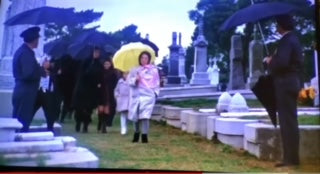
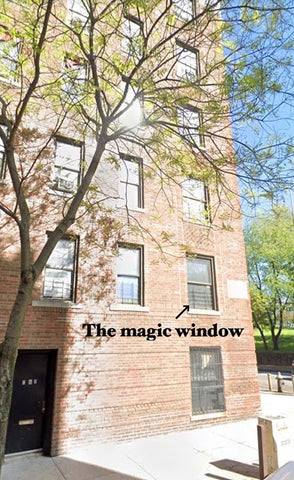
This was the room with the button drawers.
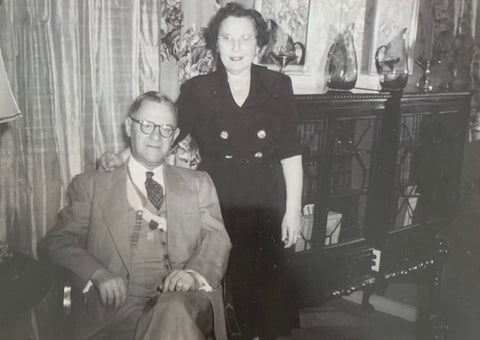
Mary and Jack Freeman
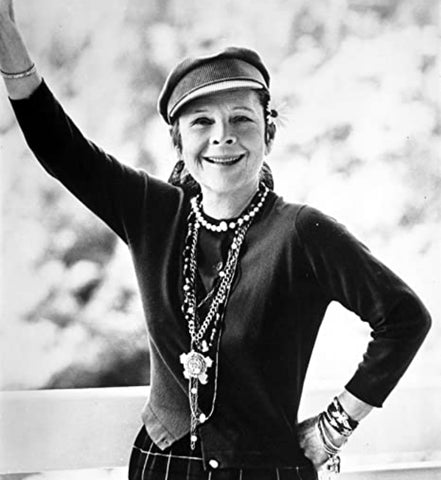
Ruth Gordon- My Favorite photo of her!
****So I now dedicate this tribute to everyone who has now or had and remembers their grandmothers in every language—-
Abuela (Spanish) Avó (Portuguese) Bà (Vietnamese)
Babcia (Polish) Babushka (Russian) Bibi (Swahili)
Bubbe (Yiddish) Dadi/Nani (Hindi) Grand-mère/Mémé (French)
Halmoni (Korean) Jadati (Arabic) Lola (Tagalog)
Nenek (Indonesian) Nonna (Italian) Nai Nai (Mandarin)
Obaasan (Japanese) Oma (German) Ouma (Afrikaans)
Thakurma/Didima (Bengali) Tutu (Hawaiian)
By Jill Modell-Dion the creator of Aging Creative.
Leave a comment. We would love to hear from you.